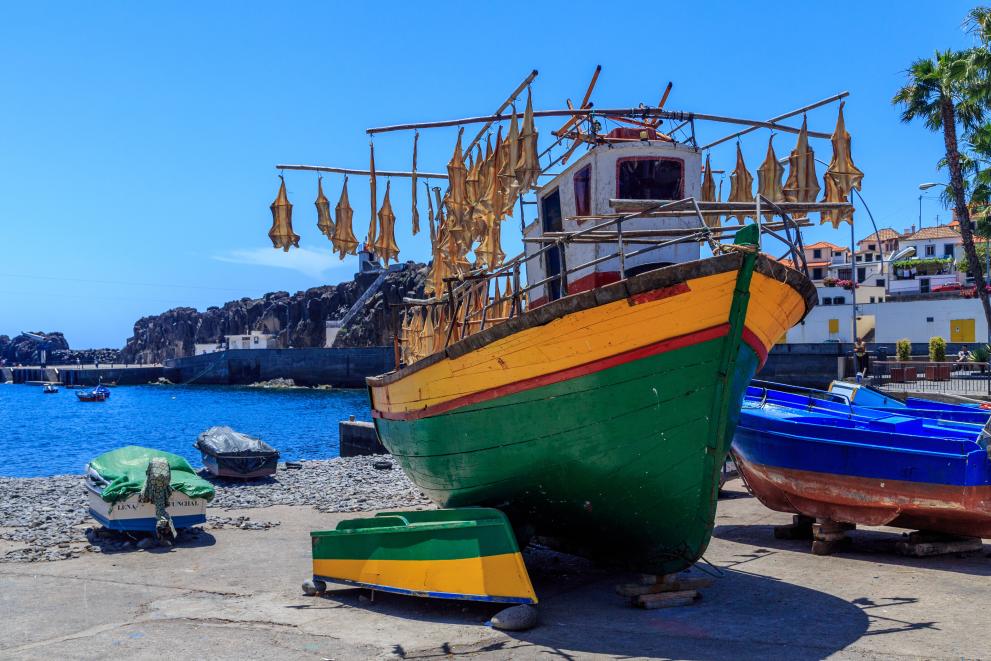The Portuguese established Blue Economy sectors directly employ more than 152 800 people and generate approximately €3.3 billion in GVA (2021). The Blue Economy in Portugal contributes by approx. 1.8% to the national GVA and by 3.2% to national employment.
The relative share of the Blue Economy has been gradually increasing in Portugal since about a decade, until it was hit by the COVID-19 pandemic. In absolute terms, employment in the established Blue Economy sectors increased from 137 000 people in 2011 to a peak of 252 000 people in 2018. Approximately 93 000 jobs were lost between 2019 and 2020 as a consequence of the health crisis (-41%). However, a 15% increase was registered in 2021.

In terms of GVA, the Portuguese Blue Economy reached a peak of €5.7 billion in 2018, representing 3.2% of the national GVA. Then it dropped to €2.3 billion in 2020, mainly as a result of the COVID-19 pandemic given that 85% of the decrease in nominal terms was registered between 2019 and 2020. Since then, the national Blue Economy has embarked on a recovery path, testified by an increase in GVA of €1 billion registered in 2021.
Portugal has the third largest Exclusive Economic Zone (EEZ) in the EU after France (1st in the world) and Denmark (15th) and became the first EU Member State to prepare a Satellite Account for the Sea.
The Portuguese Blue Economy is dominated by Coastal tourism, which contributed to the Portuguese Blue Economy by nearly 71% in terms of employment and 59% in terms of GVA. The second largest Blue Economy sector in Portugal is Marine living resources, contributing with 22% and 23% to employment and GVA, respectively. This is followed by Port activities, contributing with 10% to the Portuguese Blue Economy GVA and 3% to its employment.

In the EU, Portugal ranks 6th in employment and 8th in GVA for Coastal tourism; 7th in employment and GVA for Marine living resources; and 9th in employment for Marine non-Living resources.
The largest container port in Portugal is the port of Sines, which is also the 17th largest cargo port in the EU, handling almost 43 million Tonnes in 2021. Other important seaports include the ports of Leixões (Porto), Lisbon, Setúbal and Aveiro, handling approximately another 34 million Tonnes in total.
The largest passenger ports in Portugal are primarily located in major coastal cities and serve as key hubs for domestic and international maritime travel. The port of Horta in the Azores is the largest port with 385 000 passengers per year, followed by the ports of Funchal and Porto Santo in Madeira (517 000 in total).

Several organizations are monitoring the Portuguese Blue Economy at the national level, as illustrated below:
The Oceano Azul Foundation, a Portuguese non-profit organization dedicated to the conservation and sustainable use of the ocean, publishes a wide range of content related to the Portuguese blue economy. This includes reports, studies, and articles focusing on marine conservation, sustainable fisheries, aquaculture, marine technology, ocean governance, and maritime tourism. The foundation also shares information on its initiatives, projects, and partnerships aimed at promoting a healthy and thriving blue economy in Portugal.
The Portuguese Institute for the Ocean and Atmosphere (Instituto Português do Mar e da Atmosfera - IPMA) conducts scientific research and publishes reports, and publications on oceanography, marine ecosystems, maritime resources, and environmental issues impacting the blue economy. The institute also provides data, statistics, and assessments of marine and atmospheric conditions relevant to the sustainable use of marine resources, fisheries, aquaculture, and coastal management.
Other national sources of information on the Portuguese Blue Economy are:
For more national level data, please visit the Dashboards section within the EU Blue Economy Observatory, where you can also find information about Educational and Employment opportunities in the Blue Economy sectors.

